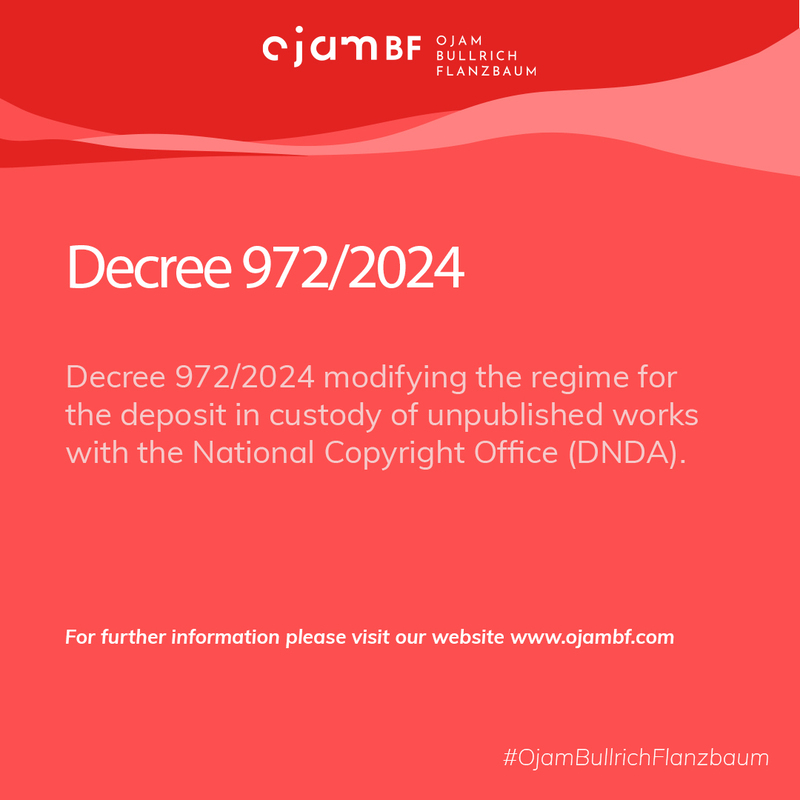New system for the custody deposit of unpublished works
On November 1, 2024, Decree 972/2024 was published and came into effect on November 2, establishing modifications to the system for the custody deposit of unpublished works before the National Copyright Office (DNDA). The aim of this regulation is to modernize the system, facilitating the process for copyright holders by enabling the digital deposit of works.
Digital format deposit of unpublished works
Prior to Decree No. 972/2024, the custody deposit of unpublished works required the physical presentation of the work in a sealed envelope with a handwritten signature. This process was somewhat cumbersome—and outdated—as it required the author (or their representatives) to appear in person at the DNDA or to send the work by mail.
The new system introduces the option for digital deposit, allowing authors to submit their unpublished works in digital format through an encrypted and digitally signed file. This not only simplifies the process but also reduces costs and expedites the procedure. Now, the deposit can be completed remotely, eliminating the need to physically send the work to DNDA offices in Buenos Aires, La Plata, or reception centers in different provinces.
Moreover, digital submission increases the legal security of the process, as encrypted files are protected against alterations and will be stored on servers managed and supervised by the DNDA.
This method provides a more secure way to preserve proof of authorship, minimizing the risk of damage or loss that authors were previously exposed to when using the physical format system exclusively.
Validity of the deposit and passing of the author
Each custody deposit will have a validity of 36 months, renewable for equal terms.
For deposits in physical format, if the renewal is not requested, the DNDA may proceed to destroy the envelope with the work after 30 business days following the expiration date.
The Decree also provides that, in the event of the author’s or co-authors’ death, heirs, successors, or rightful claimants may request the renewal or even the return of the work—if it is in physical format—but they must prove their identity and legitimacy.
Proof of authorship
It is important to note that rights over a work are established at the moment of its creation; therefore, the custody deposit does not confer any rights but serves a purely declarative purpose.
However, it is advisable to make the deposit to have a certain date and presumption of authorship, a presumption that can be rebutted with evidence
In case of plagiarism, for example, the author may present the custody deposit certificate of their work issued by the DNDA to prove their authorship and claim for infringement of their rights.
Therefore, with the new Decree, being able to submit the work in digital format simplifies the access and verification of authorship, providing authors with an effective tool to contest unauthorized uses.
The incorporation of technological tools generally results in the optimization of procedures before public entities and organizations, and in this case, the new system for depositing unpublished works will offer greater legal security and accessibility for copyright holders.
We welcome this change, as it modernizes processes and aligns with the government digitization goals. Undoubtedly, this new regime represents progress in protecting copyright in Argentina.
For further information please contact csirianni@ojambf.com

